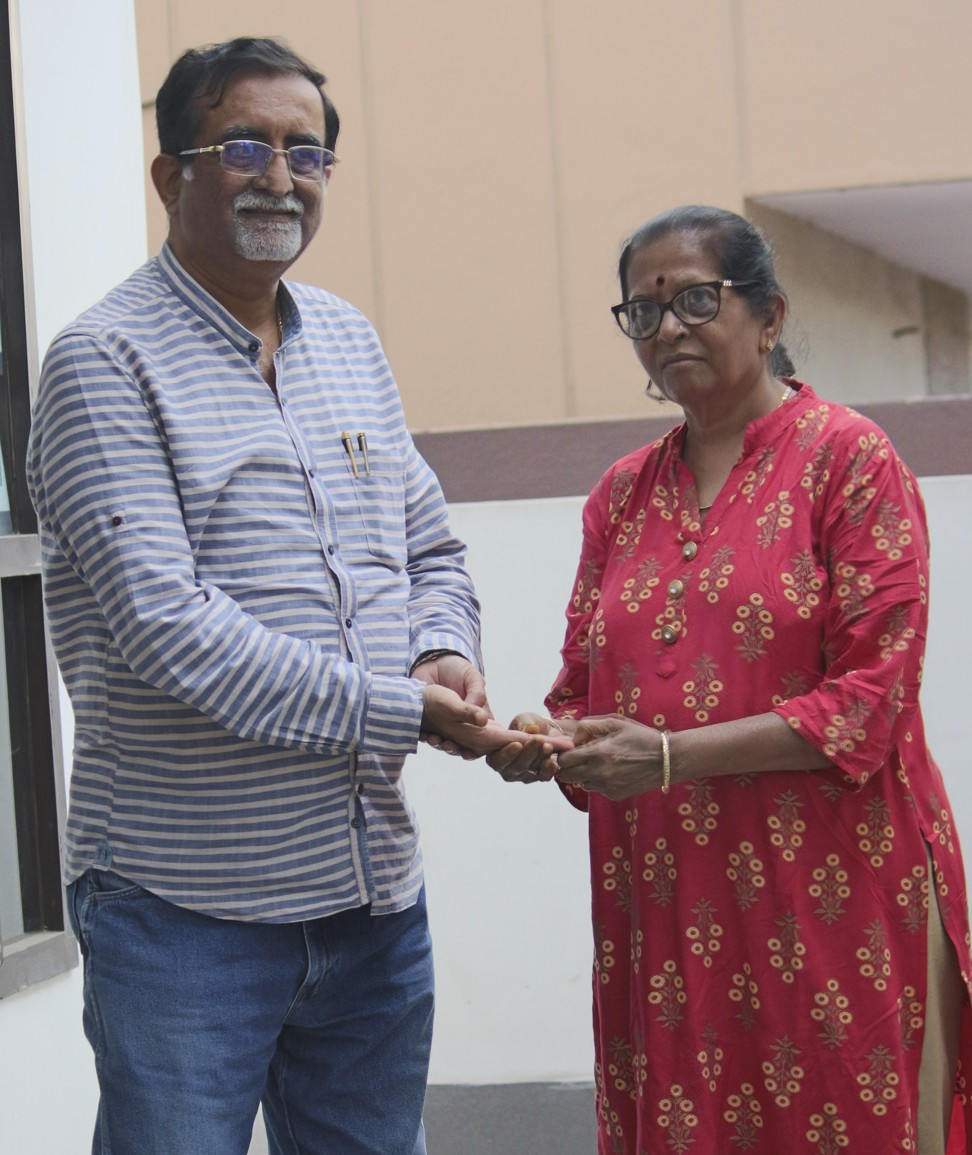
Finance professional turned healer uses acupressure and TCM to treat world leaders and prisoners
- Ketan Shah turned to acupressure in 1991 when complications set in after he had an appendectomy
- It worked so well that he trained to become an acupressurist, and Shah has since treated 350,000 patients including world leaders and prisoners
It’s another busy day at acupressurist Ketan Shah’s house in Bangalore, India, as a long line of patients – many from outside the city – wait for a consultation.
He advised her to activate pressure points twice a day, and to take 10 raw rice grains with plain water first thing in the morning – a tip many other patients with acidity problems swear by, too.
When Shah, a 59-year-old finance professional from Mumbai, was diagnosed with appendicitis in 1991, he had surgery in Bangalore. It should have been a routine procedure. Instead, he developed an infection, and had to undergo two more operations, after which he developed an abnormal lump. The doctor believed he would need more operations. That’s when Shah decided to look at alternatives that would be easier on him and on his wallet.

Someone suggested acupressure with Dr H Bhojraj, a space engineer who had taught himself this alternative healing therapy, in Bangalore. Through him, he found some relief in just a week, after his wife, Yogini Shah, who had learned to activate the pressure points as instructed by Bhojraj, administered the recommended treatment. When they went back for a review at the hospital after a month, Shah says, the lump had disappeared.

“I returned more knowledgeable and confident, and thanks to my association with the Rotary Club, I got many opportunities to talk to people about this alternate healing system,” Shah says, recounting the early days of his new-found career.
Since then, Shah has been to 32 countries, including Kenya, Dubai, the US and UK, and has treated more than 350,000 patients with problems ranging from migraines to kidney stones. His work has brought him into contact with world leaders, including former Indian President APJ Abdul Kalam and vice presidents of a dozen countries.
Around the world, people are growing more receptive to such non-invasive and self-healing methods, which can be less costly than conventional medical appointments. The first consultation with Shah typically costs 2,000 rupees (US$28), and follow-ups could range from 500 rupees to 1,000 rupees.
He usually spends 10 days a month in Bangalore, the rest of his time is spent travelling for lectures, workshops and group consultations.
By the end of it, there were 10 inmates in each jail, running an outpatient department where they helped relieve the common cold, back pain, and stomach-related issues like acidity, for their fellow inmates
He’s also written two books: Acupressure for Total Wellness and Spinal Acupressure. He believes that self-care is a powerful tool for anyone, and he is determined to “help people heal themselves,” he says.
“By the end of it, there were 10 inmates in each jail, running an outpatient department where they helped relieve the common cold, back pain, and stomach-related issues like acidity, for their fellow inmates. Some of them went on to practise acupressure in their neighbourhoods too, once they got out on parole, acquiring the moniker ‘chota doctor’ (little doctor) – a sign that they were able to integrate into society with a new order of acceptance,” he says.

“A big plus for me, I’d say, is being able to help thousands of diabetes patients live a stress-free life, and break out of the belief that their condition is irreversible,” Shah adds.
“I couldn’t have done this without my wife’s unwavering support,” Shah says of Yogini. “She has sacrificed having a family life for years, for a greater cause.”

The history of acupressure
According to the US National Centre for Complementary and Integrative Health, part of the National Institutes for Health in Bethesda, Maryland, acupressure is defined as a technique in which pressure is applied with the fingers to specific points on the body without penetrating the skin.
Chinese legends suggest that traditional medicine healers examined warriors’ battle wounds and discovered that pressing certain points on their bodies stimulated recovery. Over time, this technique came to be known as acupressure. This non-invasive form of acupuncture – in which needles are used to activate points – alleviates pain, and can impact internal organs’ functioning.

Chi is found in food, air, water, and sunlight, according to TCM, and travels through the body in channels called meridians. There are 12 major meridians in the body, corresponding to the 12 main organs.
Acupressure today is used in facials and body massages, as well as in the treatment of everyday ailments such as colds and headaches, and chronic conditions such as diabetes, back pain and asthma.

